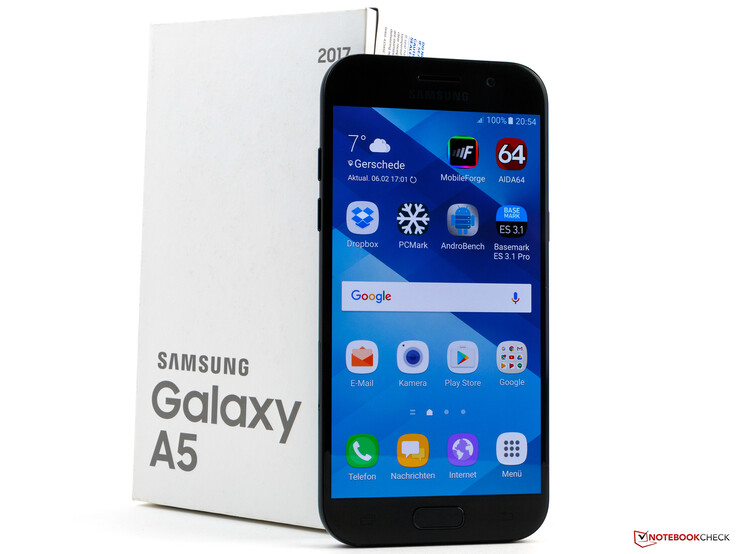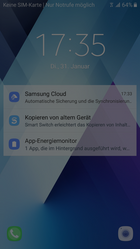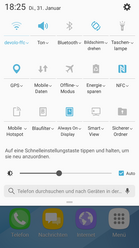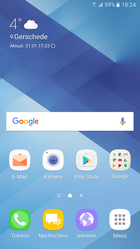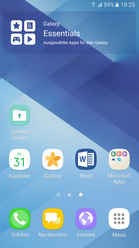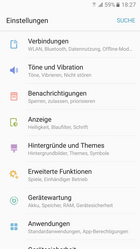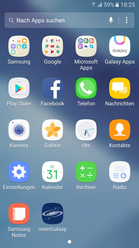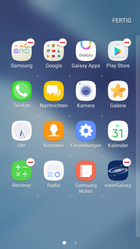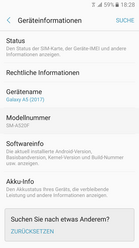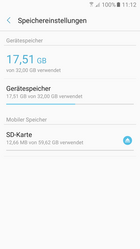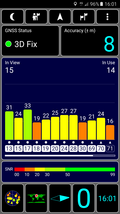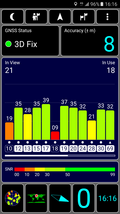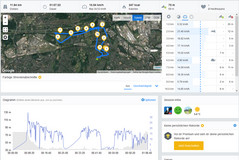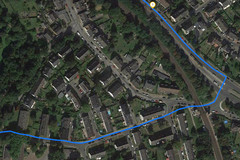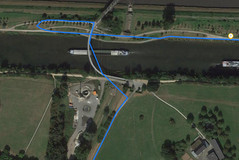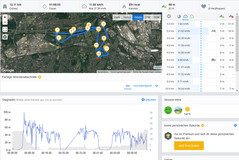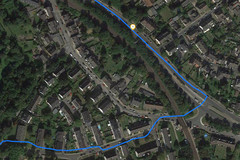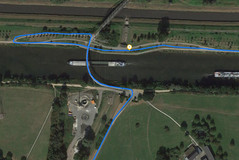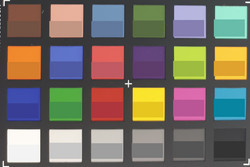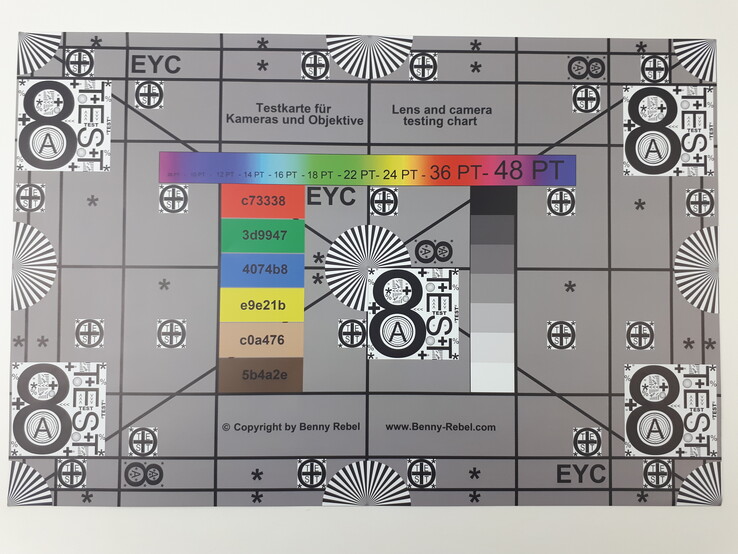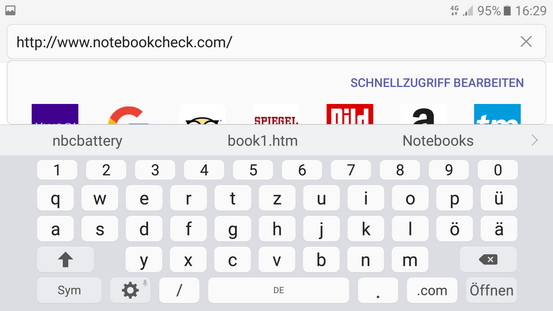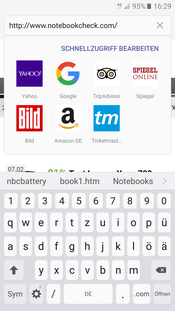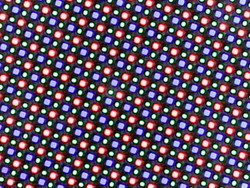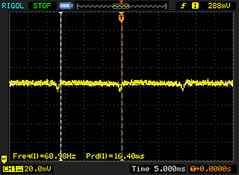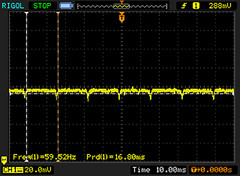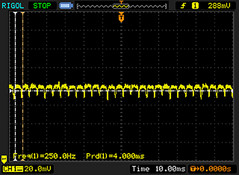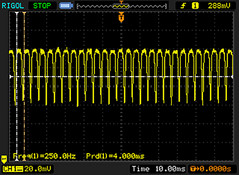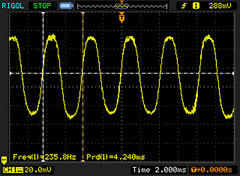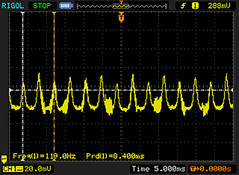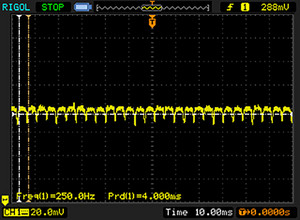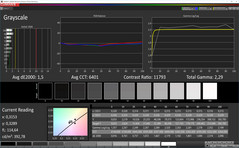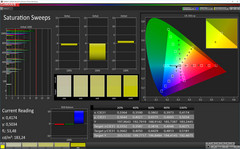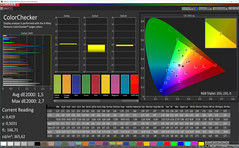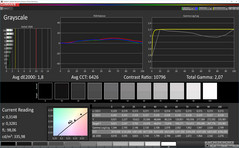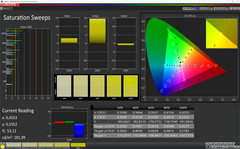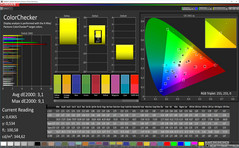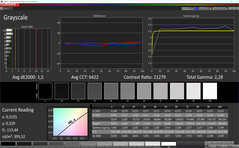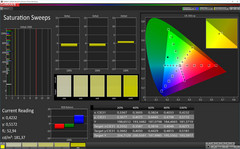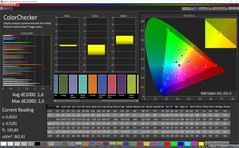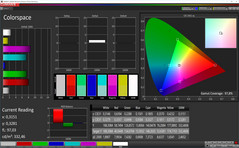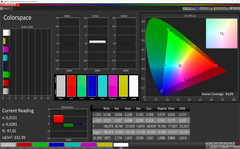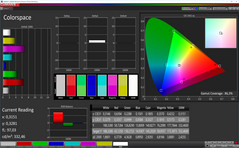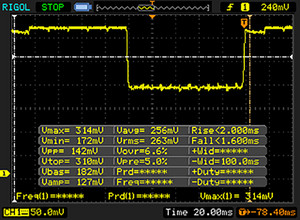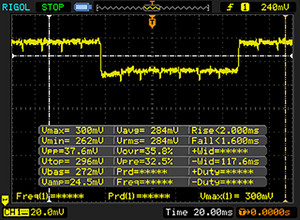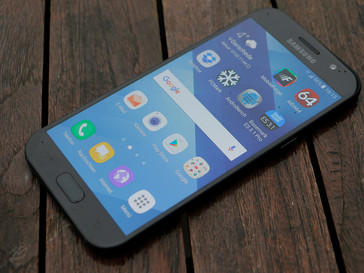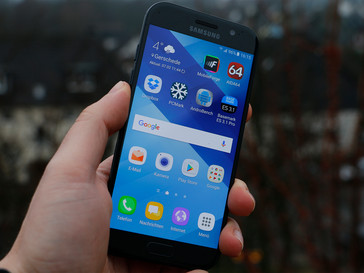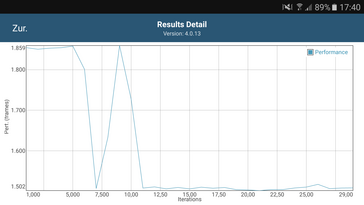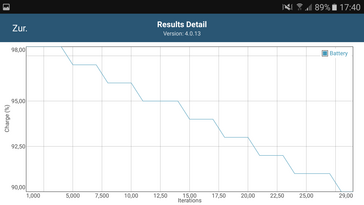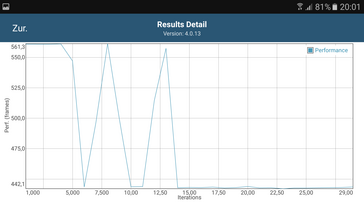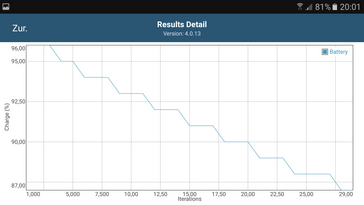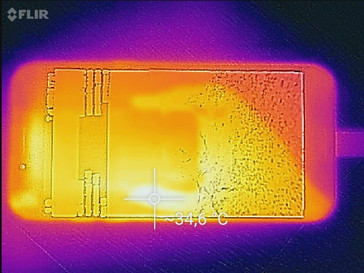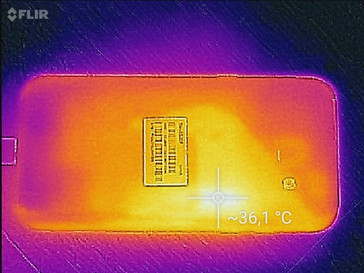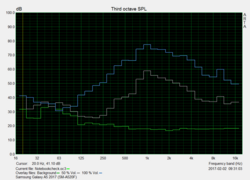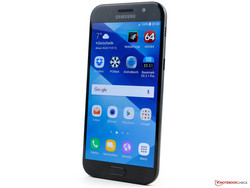Samsung Galaxy A5 (2017) Smartphone Review
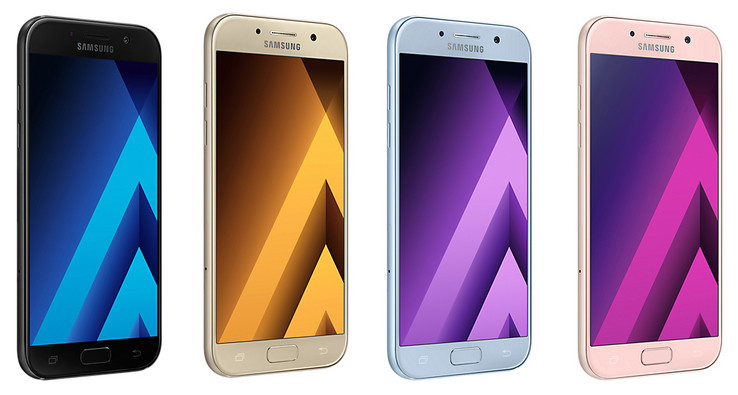
For the original German review, see here.
Samsung seems to have understood that the mid-range priced at around 400 Euros (~$423) is a highly competitive sector with really good smartphones and has thus treated the new Galaxy A5 (SM-A520F) to an extensive update. The good news first: The price remains stable at an RRP of 420 Euros (~$444).
A new Exynos processor operates underneath the glass and metal casing. It can fall back on a generous 3 GB of working memory. The integrated graphics card provides a higher performance and should render games better on the classy Full HD panel. The internal storage is now twice the size of the former Galaxy A5 (2016). Samsung has also strongly increased the megapixel count of the cameras. Furthermore, the battery is now a bit bigger. The IP68 standard, i.e. dust and water resistance, is unique in this category. The smartphone comes with good prerequisites to again catch up to its competitors.
Undeniably, OnePlus is the leader in this price range thanks to high-end specifications. However, Huawei's Nova Plus, Honor's 8, ZTE's Axon 7, and Lenovo's Moto Z Play are also strong competitors for the Galaxy A5 (2017).
Case
Like the predecessor, aluminum and glass are used in Samsung's Galaxy A5 (2017). The latter is Corning Gorilla Glass 5. Its looks closely follow those of the S series. The smartphone is now also four grams heavier and a bit thicker. The manufacturer states a height of 7.9 millimeters, which our measurements confirm. The camera no longer protrudes out of the casing and closes flush with the rear so that the handset can be placed evenly on a table.
A drawback of the glass surface is that the smartphone tends to slip away slowly on slanted surfaces. However, the handset can be held securely. Its rigidness is also good. Warping attempts do not impress the Galaxy A5 and only leads to an occasional cracking noise. Pressure on the screen does not have any consequences thanks to the OLED technology. The gaps are also narrow and even; only the transition between the glass and metal bezel in the corners has to be criticized as it is a bit irregular. However, this does not affect the feel.
The battery is non-removable so the user cannot replace it. Two dedicated slots for a micro-SD card and nano-SIM are present. A dual-SIM model does not exist. The IP68 certificate is new. This means that the Galaxy A5 is now sealed against dust and that it is resistant to prolonged submersion in fresh water.
Samsung's Galaxy A5 (2017) is available in four colors: black, gold, blue (Brandeis Blue) and pink (Martian Pink).
Connectivity
It is possible to expand the storage of Samsung's Galaxy A5 (2017) via a micro-SD card, but the additional capacity can only be used to store media data. Applications cannot be moved to or directly installed on it. It is not possible to format it as internal storage, either.
Samsung has made cutbacks in details. A radio receiver is not installed. Although the USB port supports the latest Type-C design, it still only offers the 2.0 transmission standard and no longer supports OTG.
The A5 also offers Wi-Fi Direct, Ant+, NFC, and Bluetooth 4.2.
Software
Google's Android 6.0.1 Marshmallow operating system is preloaded on Samsung's Galaxy A5 (2017). The manufacturer covers it with its own Grace UI. The still relatively new user interface (UI) was first used in the Galaxy Note 7. Samsung users will soon accommodate, but users who are used to stock Android will sometimes certainly be relieved about the search function. An update to Android 7.1 Nougat is confirmed but a fixed date has not yet been announced.
At test time, security updates from December 2016 were installed.
Communication and GPS
Samsung has installed a better modem for mobile network reception into the Galaxy A5 (2017). It now supports LTE Cat. 7. Although the maximum downstream of 300 MBit/s is identical with Cat. 6, the theoretical upstream speed has doubled to 100 MBit/s. The frequency configuration is also really good and should ensure good reception in all European countries. US travelers will, however, miss Band 12 (700 MHz) among other ones. The reception during our test in a big city using the O2 and Vodafone mobile networks was inconspicuous.
The smartphone connects to Wi-Fi networks in the IEEE 802.11 a/b/g/n/ac standards, but it does not support any MIMO technologies. The Galaxy A5 presented a low attenuation of -30 to -40 dBm in the Wi-Fi access point's vicinity - which are good rates. Generally, the handset's reception qualities are decent but rapidly start decreasing at a distance of approximately 10 meters. Video streaming is then accompanied by interruptions and the attenuation is very high with -80 to -100 dBm. Our measurements with our Linksys EA8500 reference router confirm the A5's good transmission speeds. Only OnePlus' 3T defeats it in the comparison field.
| Networking | |
| iperf3 transmit AX12 | |
| OnePlus 3T | |
| Samsung Galaxy A5 2017 | |
| Lenovo Moto Z Play | |
| Huawei Nova Plus | |
| iperf3 receive AX12 | |
| OnePlus 3T | |
| Samsung Galaxy A5 2017 | |
| Lenovo Moto Z Play | |
| Huawei Nova Plus | |
Samsung's Galaxy A5 (2017) uses the GPS, GLONASS, and BeiDou satellite networks for localization. We were tracked within a few seconds outdoors, but a bit more patience was needed indoors near a window. The accuracy of at most seven meters is not particularly exact. We took the smartphone on a bike ride to examine this more closely.
The A5 has to compete against Garmin's Edge 500 bike computer. The smartphone does not refresh the points as frequently and consequently also deviates more from the driven route. It shortens the route by approximately 2.3% compared with Garmin's device. This is still a decent performance in total and should be absolutely sufficient for amateur athletes.
Call Quality
Samsung's Galaxy A5 (2017) has a decent call quality. We could always understand our contact well and we were also almost always relatively intelligible. The microphone only sometimes reduced the volume. The smartphone's microphones exhibit a similar performance as the included in-ear headset. The speaker is also well-suitable for quiet environments.
Cameras
Samsung's Galaxy A5 (2017) offers a 16-MP camera on both the front and rear. This promises high resolution, in particular for selfies. Furthermore, both lenses have a nominal aperture of f/1.9 and should therefore be very light sensitive. In case of the front-facing camera, it is also noticed that the lens captures a lot of light with the purpose of making the photos as bright as possible. A Beauty Mode that narrows the face and enlarges the eyes via a soft focus is also present for selfies. The photos are quite good, but we primarily missed an autofocus. In return, the release speed is very fast.
The rear-facing camera has an autofocus alongside an LED flash. Daylight photos are very balanced and exhibit a relatively large scope of dynamics that is also owed to the well-functioning HDR Mode. The definition is good but decreases quite soon especially toward the edges. Particularly bright objects tend to overexpose and details are lost. Photos taken in low-light conditions are also still good and the noise is kept within limits compared with the competition.
Videos are recorded at a maximum of Full HD (1920x1080 pixels, 30 FPS). The quality is good, but support for higher frame rates and Ultra HD should be given in this price range.
We additionally take photos of our test chart and the X-Rite ColorChecker Passport under defined light conditions. They are not edited afterward. The ColorChecker presents a very good white balance. However, the other grayscales are a bit too bright. The darker color tones are saturated more strongly, which leads to a brilliant contrast. Bright colors are a bit too pale, though.
The test chart shows that the sharpness could be somewhat better despite the comparatively high resolution. Fine details are lost even in the center in maximum zoom. In return, the color graduations are relatively clear and slight reproduction errors are only produced in dark lettering on a dark background. Again, it is visible that the image sharpness deteriorates quite soon toward the edges.
Accessories and Warranty
Samsung ships its Galaxy A5 (2017) with a modular power supply that has a nominal output of up to 16.83 watts (9.0 V, 1.87 A; 5.0 V, 2.0 A), a USB cable, SIM-card tool, an in-ear headset, a quick-start guide, and some leaflets concerning safety, warranty, and Internet usage. The manufacturer optionally offers a matching cover (starts at 15 Euros, ~$15) and screen protector (15 Euros, ~$15) in its shop.
Samsung includes a two-year warranty on its product; the accessories are covered for six months and the battery for one year. Please see our Guarantees, Return Policies and Warranties FAQ for country-specific information.
Input Devices and Handling
The capacitive touchscreen in Samsung's Galaxy A5 (2017) detects up to five touch points at the same time. The surface of the Corning Gorilla Glass 5 has superb gliding qualities. Inputs are implemented quickly and accurately. The keyboard layout that Samsung uses is very clearly arranged, but it only offers small keys that often lead to typos. When preferred, downloading an alternative keyboard from the Play Store is uncomplicated.
The physical buttons have a high-quality feel and crisp pressure point alongside a short drop. The home button also makes a good impression, and it functions very reliably just like both neighboring sensor buttons. A fingerprint scanner is integrated into the home button. However, it is not quite as reliable and its identification rate is not as good as the modules in the devices by Huawei or OnePlus. We often had to place the finger on the surface several times, and sometimes we had to wait half a minute before we could try again. The scanner also had problems with moist fingers and denied access.
Display
The panel in Samsung's Galaxy A5 (2017) seems unchanged compared with its predecessor. It is still 5.2-inches and uses Samsung's Super AMOLED technology. The Full HD resolution (1920x1080 pixels) ensures a high pixel density of 424 PPI. Since the screen can shine even more brightly when the ambient light sensor is enabled, we measured it using maximum brightness on a white image. The brightness differences to the 2016 model only seem vast because last year's model was measured without the light sensor. When the sensor in the A5 (2017) is disabled, the OLED panel only achieves a maximum of 340 cd/m² in the center. The review sample achieves up to 660 cd/m² in the screen center in the APL measurement, i.e. evenly distributed bright and dark areas. The illumination of 93% is also very homogeneous.
Since it is an OLED panel, every pixel can be illuminated individually. Thus, black areas are really black. This results in a theoretically infinite contrast ratio.
The Galaxy A5 offers a blue light filter for the night, and the Display-Always-On known from the Galaxy S7 Edge is also onboard.
| |||||||||||||||||||||||||
Brightness Distribution: 93 %
Center on Battery: 660 cd/m²
Contrast: ∞:1 (Black: 0 cd/m²)
ΔE ColorChecker Calman: 1.6 | ∀{0.5-29.43 Ø4.77}
ΔE Greyscale Calman: 1.5 | ∀{0.09-98 Ø5}
Gamma: 2.28
CCT: 6422 K
| Samsung Galaxy A5 2017 Super AMOLED, 1920x1080, 5.2" | Samsung Galaxy A5 2016 Super AMOLED, 1920x1080, 5.2" | Huawei Nova Plus IPS, 1920x1080, 5.5" | ZTE Axon 7 AMOLED, 2560x1440, 5.5" | OnePlus 3T Optic-AMOLED, 1920x1080, 5.5" | Lenovo Moto Z Play AMOLED, 1920x1080, 5.5" | Honor 8 IPS, 1920x1080, 5.2" | |
|---|---|---|---|---|---|---|---|
| Screen | -21% | -102% | -137% | -206% | -34% | -150% | |
| Brightness middle (cd/m²) | 539 | 378 -30% | 485 -10% | 328 -39% | 421 -22% | 509 -6% | 451 -16% |
| Brightness (cd/m²) | 542 | 380 -30% | 481 -11% | 334 -38% | 430 -21% | 511 -6% | 443 -18% |
| Brightness Distribution (%) | 93 | 91 -2% | 90 -3% | 88 -5% | 84 -10% | 93 0% | 93 0% |
| Black Level * (cd/m²) | 0.5 | 0.4 | |||||
| Colorchecker dE 2000 * | 1.6 | 1.95 -22% | 4.2 -163% | 4.6 -188% | 7.1 -344% | 2.2 -38% | 5.4 -238% |
| Colorchecker dE 2000 max. * | 2.6 | 3.09 -19% | 7.9 -204% | 14.7 -465% | 15.3 -488% | 5.8 -123% | 9.9 -281% |
| Greyscale dE 2000 * | 1.5 | 1.86 -24% | 4.8 -220% | 2.8 -87% | 6.8 -353% | 2 -33% | 6.7 -347% |
| Gamma | 2.28 96% | 2.13 103% | 2.36 93% | 2.29 96% | 2.23 99% | 2.25 98% | 2.33 94% |
| CCT | 6422 101% | 6376 102% | 7568 86% | 6612 98% | 7866 83% | 6768 96% | 8262 79% |
| Contrast (:1) | 970 | 1128 |
* ... smaller is better
A peculiarity of OLED panels is their use of pulse-width modulation (PWM) for brightness control. Sensitive users could perceive flickering, and eye problems or headaches could result in low frequencies. PWM is also used in Samsung's Galaxy A5 (2017). The amplitude curve already displays visible peaks at a brightness of approximately 93% (manual settings), and the frequency of 250 Hz is relatively low. The frequency even drops to around 60 Hz beyond that, but the amplitude curve is very linear, making problems unlikely. The frequency fluctuates between 119 and 231 Hz in minimum brightness, which is a very low 1.77 cd/m².
Screen Flickering / PWM (Pulse-Width Modulation)
| Screen flickering / PWM detected | 250 Hz | ||
The display backlight flickers at 250 Hz (worst case, e.g., utilizing PWM) . The frequency of 250 Hz is relatively low, so sensitive users will likely notice flickering and experience eyestrain at the stated brightness setting and below. In comparison: 53 % of all tested devices do not use PWM to dim the display. If PWM was detected, an average of 8088 (minimum: 5 - maximum: 343500) Hz was measured. | |||
As usual, Samsung offers a color profile manager in its higher-priced models that are set to Adaptive Display by default. We examined the three manual settings Basic, Movie and Photo with a photospectrometer and CalMAN analysis software. The first thing that is noticed is that the profile Basic delivers the most accurate rates, but it also only uses the sRGB color space. On the other hand, Movie and Photo are calibrated according to the larger AdobeRGB color space. It is striking that the bluish tint is hardly present any longer in the Movie profile; this was a bit more prominent in the Galaxy S7/Edge.
The screen's color accuracy is outstanding. An average DeltaE of 1.5 is recorded in the grayscale levels, without significant peaks. Even the worst rate of dE 2.4 remains below 3, and thus the shift from the target will be as good as invisible to the human eye. The positive impression continues in the mixed colors as the colors all remain below dE3. Hardly any other manufacturer provides such an accurate color reproduction even among the high-end competition.
Display Response Times
| ↔ Response Time Black to White | ||
|---|---|---|
| 3.6 ms ... rise ↗ and fall ↘ combined | ↗ 2 ms rise | |
| ↘ 1.6 ms fall | ||
| The screen shows very fast response rates in our tests and should be very well suited for fast-paced gaming. In comparison, all tested devices range from 0.1 (minimum) to 240 (maximum) ms. » 14 % of all devices are better. This means that the measured response time is better than the average of all tested devices (20.2 ms). | ||
| ↔ Response Time 50% Grey to 80% Grey | ||
| 3.6 ms ... rise ↗ and fall ↘ combined | ↗ 2 ms rise | |
| ↘ 1.6 ms fall | ||
| The screen shows very fast response rates in our tests and should be very well suited for fast-paced gaming. In comparison, all tested devices range from 0.165 (minimum) to 636 (maximum) ms. » 13 % of all devices are better. This means that the measured response time is better than the average of all tested devices (31.6 ms). | ||
Samsung's Galaxy A5 (2017) does not show any weaknesses outdoors. The bright screen with its extremely high contrast never finds its limits under cloudy conditions. The content should still be well-legible despite the reflective screen even in sunlight. Unfortunately, we could not test this since heavy clouds concealed the sun. However, the fingerprints on the screen are noticed immediately in bright ambient light.
Performance
We criticized the somewhat weak performance of the SoC installed in Samsung's Galaxy A5 (2016). The manufacturer has also made improvements here and now relies on the proprietary Exynos 7880. It is an octa-core processor that exclusively uses Cortex A53 cores that clock up to 1.9 GHz. An ARM Mali-T830 MP3 graphics unit and 3 GB of LPDDR3 working memory are also installed.
Thus, the Galaxy A5 (2017) is built on solid performance that is situated in the mid-range. The CPU's pure performance is slightly above that of a Snapdragon 625 that is used in the Nova Plus and Moto Z Play. The performance of the graphics unit is even higher than that of an Adreno 506. While both systems are still on par in the OpenGL ES 2.0 test, the ARM GPU is 45 to 86% faster in the more demanding OpenGL ES 3.x test. However, it cannot compete with the strong Adreno 530 in the Axon 7 or OnePlus 3T.
Unfortunately, the review sample did not manage to use this speed advantage in the system performance. While it could still keep up well in AnTuTu, the A5 only manages to outperform the Axon 7 in PCMark. The Grace UI lets the user feel this with minor stutters in routine use. It got really jerky when opening the Upday news website on the home screen.
| AnTuTu v6 - Total Score (sort by value) | |
| Samsung Galaxy A5 2017 | |
| Samsung Galaxy A5 2016 | |
| Huawei Nova Plus | |
| Lenovo Moto Z Play | |
| Honor 8 | |
| ZTE Axon 7 | |
| OnePlus 3T | |
| Geekbench 4.0 | |
| 64 Bit Single-Core Score (sort by value) | |
| Samsung Galaxy A5 2017 | |
| Huawei Nova Plus | |
| Lenovo Moto Z Play | |
| Honor 8 | |
| ZTE Axon 7 | |
| OnePlus 3T | |
| 64 Bit Multi-Core Score (sort by value) | |
| Samsung Galaxy A5 2017 | |
| Huawei Nova Plus | |
| Lenovo Moto Z Play | |
| Honor 8 | |
| ZTE Axon 7 | |
| OnePlus 3T | |
| GFXBench (DX / GLBenchmark) 2.7 | |
| T-Rex Onscreen (sort by value) | |
| Samsung Galaxy A5 2017 | |
| Samsung Galaxy A5 2016 | |
| Huawei Nova Plus | |
| Lenovo Moto Z Play | |
| Honor 8 | |
| ZTE Axon 7 | |
| OnePlus 3T | |
| 1920x1080 T-Rex Offscreen (sort by value) | |
| Samsung Galaxy A5 2017 | |
| Samsung Galaxy A5 2016 | |
| Huawei Nova Plus | |
| Lenovo Moto Z Play | |
| Honor 8 | |
| ZTE Axon 7 | |
| OnePlus 3T | |
| GFXBench 3.0 | |
| on screen Manhattan Onscreen OGL (sort by value) | |
| Samsung Galaxy A5 2017 | |
| Samsung Galaxy A5 2016 | |
| Huawei Nova Plus | |
| Lenovo Moto Z Play | |
| Honor 8 | |
| ZTE Axon 7 | |
| OnePlus 3T | |
| 1920x1080 1080p Manhattan Offscreen (sort by value) | |
| Samsung Galaxy A5 2017 | |
| Samsung Galaxy A5 2016 | |
| Huawei Nova Plus | |
| Lenovo Moto Z Play | |
| Honor 8 | |
| ZTE Axon 7 | |
| OnePlus 3T | |
| GFXBench 3.1 | |
| on screen Manhattan ES 3.1 Onscreen (sort by value) | |
| Samsung Galaxy A5 2017 | |
| Huawei Nova Plus | |
| Lenovo Moto Z Play | |
| Honor 8 | |
| ZTE Axon 7 | |
| OnePlus 3T | |
| 1920x1080 Manhattan ES 3.1 Offscreen (sort by value) | |
| Samsung Galaxy A5 2017 | |
| Huawei Nova Plus | |
| Lenovo Moto Z Play | |
| Honor 8 | |
| ZTE Axon 7 | |
| OnePlus 3T | |
| PCMark for Android - Work performance score (sort by value) | |
| Samsung Galaxy A5 2017 | |
| Samsung Galaxy A5 2016 | |
| Huawei Nova Plus | |
| Lenovo Moto Z Play | |
| Honor 8 | |
| ZTE Axon 7 | |
| OnePlus 3T | |
We used the preloaded Samsung browser that is based on Chrome 44 for Internet browsing. Subjectively, it functioned really well and the benchmarks also confirms the good performance of Samsung's Galaxy A5 (2017). Only the competitors based on a stronger SoC are even faster.
| WebXPRT 2015 - Overall (sort by value) | |
| Samsung Galaxy A5 2017 | |
| Samsung Galaxy A5 2016 | |
| Huawei Nova Plus | |
| Lenovo Moto Z Play | |
| Honor 8 | |
| ZTE Axon 7 | |
| OnePlus 3T | |
| JetStream 1.1 - Total Score (sort by value) | |
| Samsung Galaxy A5 2017 | |
| Samsung Galaxy A5 2016 | |
| Huawei Nova Plus | |
| Lenovo Moto Z Play | |
| Honor 8 | |
| ZTE Axon 7 | |
| OnePlus 3T | |
| Octane V2 - Total Score (sort by value) | |
| Samsung Galaxy A5 2017 | |
| Samsung Galaxy A5 2016 | |
| Huawei Nova Plus | |
| Lenovo Moto Z Play | |
| Honor 8 | |
| ZTE Axon 7 | |
| OnePlus 3T | |
| Mozilla Kraken 1.1 - Total (sort by value) | |
| Samsung Galaxy A5 2017 | |
| Samsung Galaxy A5 2016 | |
| Huawei Nova Plus | |
| Lenovo Moto Z Play | |
| Honor 8 | |
| ZTE Axon 7 | |
| OnePlus 3T | |
* ... smaller is better
Samsung's Galaxy A5 (2017) offers 32 GB of eMMC flash memory. Approximately 23 GB is available after initial use, and when all updates have been downloaded this even shrinks to just 20.2 GB. Uninstalling the little bloatware retrieves an additional 300 MB of storage. The flash memory's speed is the slowest in the comparison field and can also only be called slow otherwise.
We tested the micro-SD slot with our Toshiba Exceria Pro M401 reference card. The smartphone does not show any weaknesses here and delivers relatively good rates although the memory card's potential is not exhausted.
| Samsung Galaxy A5 2017 | Samsung Galaxy A5 2016 | Huawei Nova Plus | Lenovo Moto Z Play | Honor 8 | ZTE Axon 7 | OnePlus 3T | |
|---|---|---|---|---|---|---|---|
| AndroBench 3-5 | -3% | 27% | 63% | 36% | 115% | 305% | |
| Sequential Read 256KB (MB/s) | 182 | 209.4 15% | 241.6 33% | 254.8 40% | 247.5 36% | 406.5 123% | 436.4 140% |
| Sequential Write 256KB (MB/s) | 77.1 | 60.4 -22% | 82.1 6% | 73.1 -5% | 119.3 55% | 150.9 96% | 165.3 114% |
| Random Read 4KB (MB/s) | 22.41 | 22.9 2% | 35.64 59% | 38.78 73% | 34.16 52% | 121.1 440% | 123.6 452% |
| Random Write 4KB (MB/s) | 12.13 | 11.2 -8% | 30.12 148% | 45.58 276% | 31.5 160% | 16.22 34% | 74.4 513% |
| Sequential Read 256KB SDCard (MB/s) | 73.7 | 41.64 -44% | 74.6 1% | 53.7 -27% | 78.4 6% | ||
| Sequential Write 256KB SDCard (MB/s) | 56 | 33.32 -40% | 50.6 -10% | 23.59 -58% | 51.3 -8% |
Games
The ARM Mali-T830 MP3 graphics unit provides a decent mid-range performance and supports the latest OpenGL ES 3.2 standard, but not the Vulkan API. Thus, all games from Google's Play Store are playable, and even more demanding games like Asphalt 8 run in high details. However, minor stutters might occasionally be noticed then. This is also true for Dead Trigger 2 that also seems to have a frame rate limitation. Simple games, such as Bubble Witch 3 Saga, run smoothly.
The hardware in the Galaxy A5 does not give reason for complaint. The touchscreen and sensors do an impeccable job. The speaker's good positioning has to be especially highlighted here. Furthermore, the Game Launcher known from the S series is also onboard.
| Asphalt 8: Airborne | |||
| Settings | Value | ||
| high | 29 fps | ||
| very low | 30 fps | ||
| Dead Trigger 2 | |||
| Settings | Value | ||
| high | 30 fps | ||
Emissions
Temperature
The surface temperatures of Samsung's Galaxy A5 (2017) stay relatively low even during permanent load and do not surpass 34 °C. We examined whether the smartphone also stays cool under its hood with the GFXBench battery test. In the easier T-Rex test (OpenGL ES 2.0), the review sample's performance drops by about 20% after 12 runs. The performance loss is on a similar level in the more demanding Manhattan test. Thus, throttling can be determined.
(+) The maximum temperature on the upper side is 33.4 °C / 92 F, compared to the average of 35.2 °C / 95 F, ranging from 21.9 to 247 °C for the class Smartphone.
(+) The bottom heats up to a maximum of 34 °C / 93 F, compared to the average of 34 °C / 93 F
(+) In idle usage, the average temperature for the upper side is 31.1 °C / 88 F, compared to the device average of 32.9 °C / 91 F.
Speaker
The at first seemingly strange positioning of the mono speaker in Samsung's Galaxy A5 (2017) turns out to be well considered. The device can be placed on a table, held in portrait or landscape mode without covering it. The speaker's quality is sufficient for occasionally watching a short video or sampling music pieces. The emphasis of the higher mids at around 1 kHz creates a relatively dominant sound impression that is not particularly balanced.
The audio jack offers a low-noise sound reproduction when using the right headphone. The included in-ear headset does not do a particularly good job here. It produces audible noise and the low tones are too prominent. Although this simulates a powerful sound, it does not convince in terms of balance and accuracy. Furthermore, each earbud has to be pushed deeply into the ear canals for achieving the best possible result.
Samsung Galaxy A5 2017 audio analysis
(+) | speakers can play relatively loud (83 dB)
Bass 100 - 315 Hz
(-) | nearly no bass - on average 15.5% lower than median
(±) | linearity of bass is average (9.1% delta to prev. frequency)
Mids 400 - 2000 Hz
(±) | higher mids - on average 9.4% higher than median
(±) | linearity of mids is average (7.6% delta to prev. frequency)
Highs 2 - 16 kHz
(±) | higher highs - on average 5% higher than median
(±) | linearity of highs is average (7.6% delta to prev. frequency)
Overall 100 - 16.000 Hz
(±) | linearity of overall sound is average (23.6% difference to median)
Compared to same class
» 53% of all tested devices in this class were better, 8% similar, 39% worse
» The best had a delta of 11%, average was 35%, worst was 134%
Compared to all devices tested
» 70% of all tested devices were better, 6% similar, 24% worse
» The best had a delta of 4%, average was 24%, worst was 134%
Huawei Nova Plus audio analysis
(+) | speakers can play relatively loud (87.4 dB)
Bass 100 - 315 Hz
(-) | nearly no bass - on average 28.5% lower than median
(-) | bass is not linear (15.9% delta to prev. frequency)
Mids 400 - 2000 Hz
(+) | balanced mids - only 3.5% away from median
(+) | mids are linear (5% delta to prev. frequency)
Highs 2 - 16 kHz
(±) | higher highs - on average 5.7% higher than median
(+) | highs are linear (3.3% delta to prev. frequency)
Overall 100 - 16.000 Hz
(±) | linearity of overall sound is average (21.3% difference to median)
Compared to same class
» 40% of all tested devices in this class were better, 8% similar, 51% worse
» The best had a delta of 11%, average was 35%, worst was 134%
Compared to all devices tested
» 59% of all tested devices were better, 7% similar, 34% worse
» The best had a delta of 4%, average was 24%, worst was 134%
Lenovo Moto Z Play audio analysis
(+) | speakers can play relatively loud (88.1 dB)
Bass 100 - 315 Hz
(-) | nearly no bass - on average 28.9% lower than median
(±) | linearity of bass is average (8.3% delta to prev. frequency)
Mids 400 - 2000 Hz
(±) | reduced mids - on average 5.2% lower than median
(+) | mids are linear (4.7% delta to prev. frequency)
Highs 2 - 16 kHz
(+) | balanced highs - only 1.9% away from median
(+) | highs are linear (1.4% delta to prev. frequency)
Overall 100 - 16.000 Hz
(±) | linearity of overall sound is average (17.9% difference to median)
Compared to same class
» 15% of all tested devices in this class were better, 8% similar, 76% worse
» The best had a delta of 11%, average was 35%, worst was 134%
Compared to all devices tested
» 36% of all tested devices were better, 8% similar, 56% worse
» The best had a delta of 4%, average was 24%, worst was 134%
Frequency diagram in comparison (checkboxes above can be turned on/off!)
Energy Management
Power Consumption
The power consumption measurements of Samsung's Galaxy A5 (2017) are convincing and have been improved greatly compared with the predecessor. The smartphone drains 1.36 watts from the outlet with the screen brightness set to maximum manually. This rate increases to 1.88 watts when the ambient light sensor is enabled. The A5 consumes 4.81 watts during full load with enabled sensor.
The review sample is also pleasingly efficient in standby mode. The consumption climbs to 0.25 watts when the Display-Always-On is used, which is also a good rate. The power supply's internal consumption is also pleasingly low. It settles to 0.006 watts when the handset is not connected.
Since the Galaxy A5 (2017) supports Quick Charge, it does not need long to recharge. The battery reaches a capacity of 23% after 15 minutes, and it is charged to 43% after half an hour. 80% is reached after 56 minutes, and it is completely recharged in 90 minutes.
| Off / Standby | |
| Idle | |
| Load |
|
Key:
min: | |
| Samsung Galaxy A5 2017 3000 mAh | Samsung Galaxy A5 2016 2900 mAh | Huawei Nova Plus 3340 mAh | Lenovo Moto Z Play 3510 mAh | Honor 8 3000 mAh | ZTE Axon 7 3250 mAh | OnePlus 3T 3400 mAh | |
|---|---|---|---|---|---|---|---|
| Power Consumption | -30% | -16% | 23% | -53% | -50% | -84% | |
| Idle Minimum * (Watt) | 0.64 | 0.96 -50% | 0.49 23% | 0.51 20% | 0.78 -22% | 0.64 -0% | 0.61 5% |
| Idle Average * (Watt) | 1.36 | 1.64 -21% | 1.63 -20% | 0.87 36% | 1.89 -39% | 0.84 38% | 1.77 -30% |
| Idle Maximum * (Watt) | 1.4 | 1.71 -22% | 1.76 -26% | 0.9 36% | 2.02 -44% | 0.87 38% | 1.81 -29% |
| Load Average * (Watt) | 2.53 | 2.98 -18% | 2.98 -18% | 1.69 33% | 5.28 -109% | 6.02 -138% | 6.67 -164% |
| Load Maximum * (Watt) | 3.63 | 5.08 -40% | 4.99 -37% | 4 -10% | 5.44 -50% | 10.45 -188% | 10.98 -202% |
* ... smaller is better
Battery Runtime
We already expected good runtimes just in view of the low power consumption. However, the Galaxy A5 (2017) even surpasses this and presents a superb battery life. This is likely mainly due to the medium energy-saving mode that was enabled in the test using an adapted screen brightness (150 cd/m²). Only the Moto Z Play achieves better runtimes in the comparison field, but it also has a much bigger battery.
We also performed the PCMark Work 2.0 Battery Life Test (150 cd/m²) that simulates everyday use based on the benchmark. The Galaxy A5 (2017) achieved an even better runtime than Huawei's Mate 9 (4000 mAh) here.
| PCMark for Android - Work 2.0 battery life | |
| Samsung Galaxy A5 2017 | |
| Huawei Mate 9 | |
| Samsung Galaxy J5 2016 | |
| Samsung Galaxy S7 | |
| Samsung Galaxy A5 2017 3000 mAh | Samsung Galaxy A5 2016 2900 mAh | Huawei Nova Plus 3340 mAh | Lenovo Moto Z Play 3510 mAh | Honor 8 3000 mAh | ZTE Axon 7 3250 mAh | OnePlus 3T 3400 mAh | |
|---|---|---|---|---|---|---|---|
| Battery runtime | -15% | -17% | 16% | -43% | -39% | -35% | |
| Reader / Idle (h) | 40.3 | 38.7 -4% | 34.1 -15% | 42.3 5% | 24.8 -38% | 28.9 -28% | 23.7 -41% |
| H.264 (h) | 16.4 | 11.2 -32% | 12.2 -26% | 19.8 21% | 8.8 -46% | 11.7 -29% | 13.5 -18% |
| WiFi v1.3 (h) | 14.1 | 10.4 -26% | 13.7 -3% | 13.7 -3% | 8.3 -41% | 6.9 -51% | 8.2 -42% |
| Load (h) | 7.8 | 8.1 4% | 6.1 -22% | 10.9 40% | 4.3 -45% | 4.1 -47% | 4.7 -40% |
Pros
Cons
Verdict
The new 2017 version of Samsung's Galaxy A5 (SM-A520F) is in no way inferior to its competition - the Korean manufacturer delivers a really good smartphone. Its successful design and, above all, its outstanding battery life are convincing. Although the performance does not set standards, it is very appropriate for the price range. Only the Grace UI does not run quite smoothly everywhere, but it is an improvement over its TouchWiz predecessor. The cameras shoot good photos although we would have wished for a better configuration for the video function. The dust and water resistance, which is also found in Samsung's premium models, is unique in this price range. The screen is simply superb. However, users who react sensitively to PWM-flickering, as is the case here, should consider this when choosing a smartphone.
Samsung has improved the most important points in its new Galaxy A5 and primarily convinces with its outstanding battery life.
The Galaxy A5 (2017) does not exhibit any major shortcomings, but small details, such as the slow storage, the lack of OTG and dual-SIM, might certainly be the decisive features for some buyers.
Samsung Galaxy A5 2017
- 02/07/2017 v6 (old)
Daniel Schmidt




